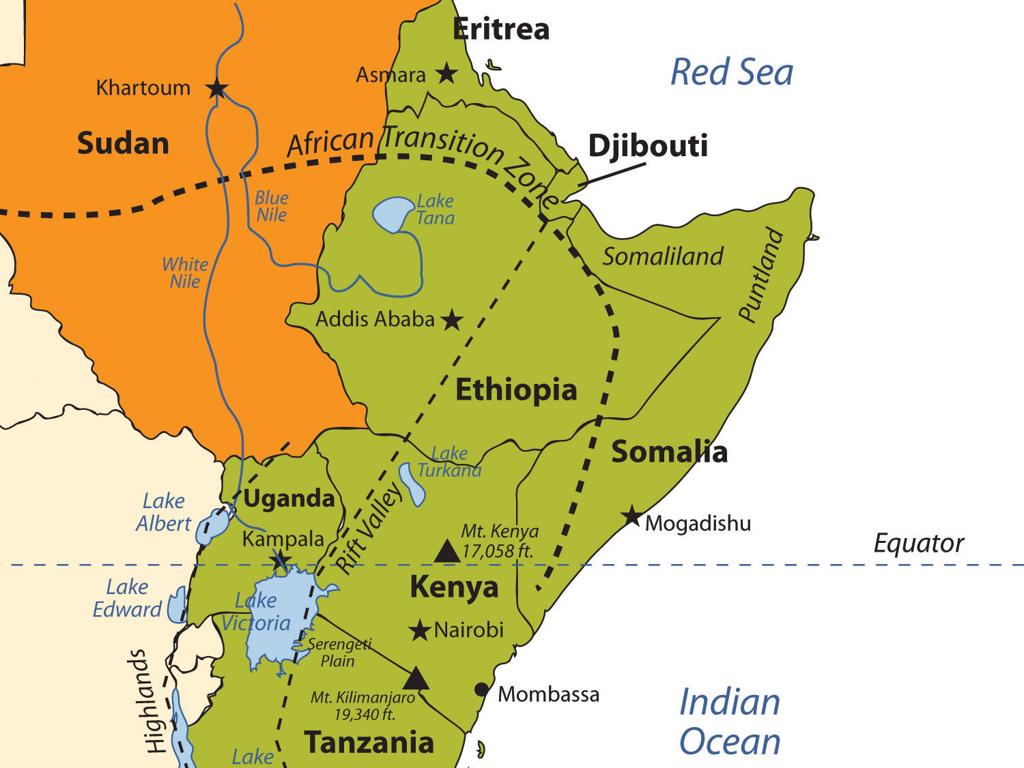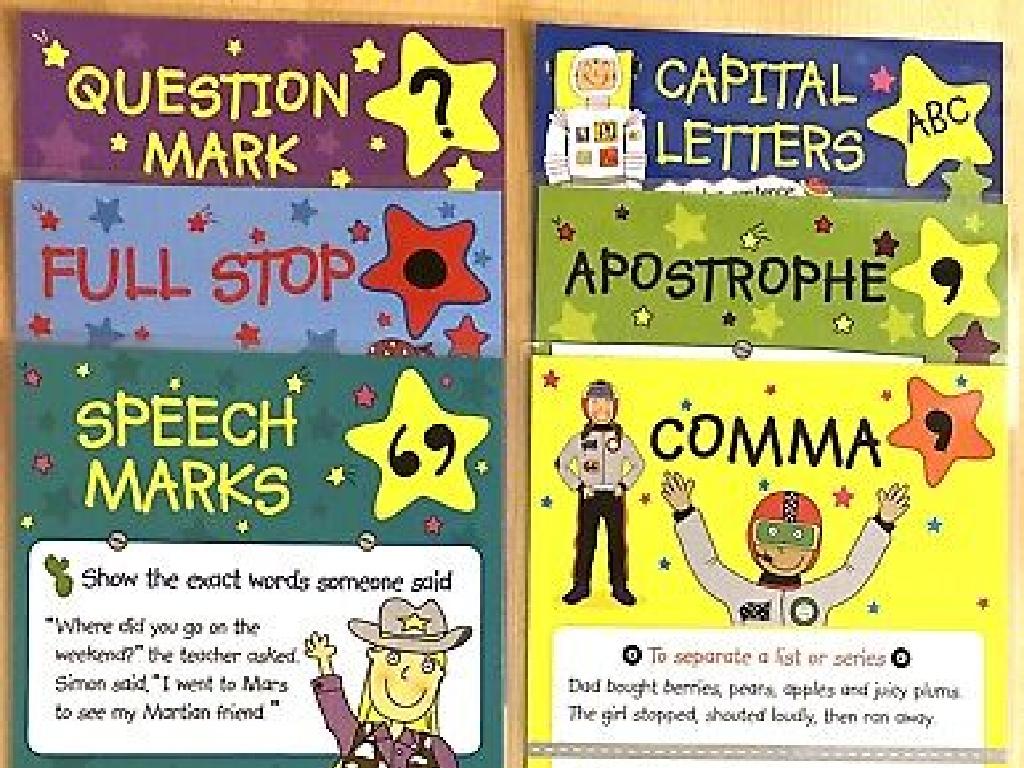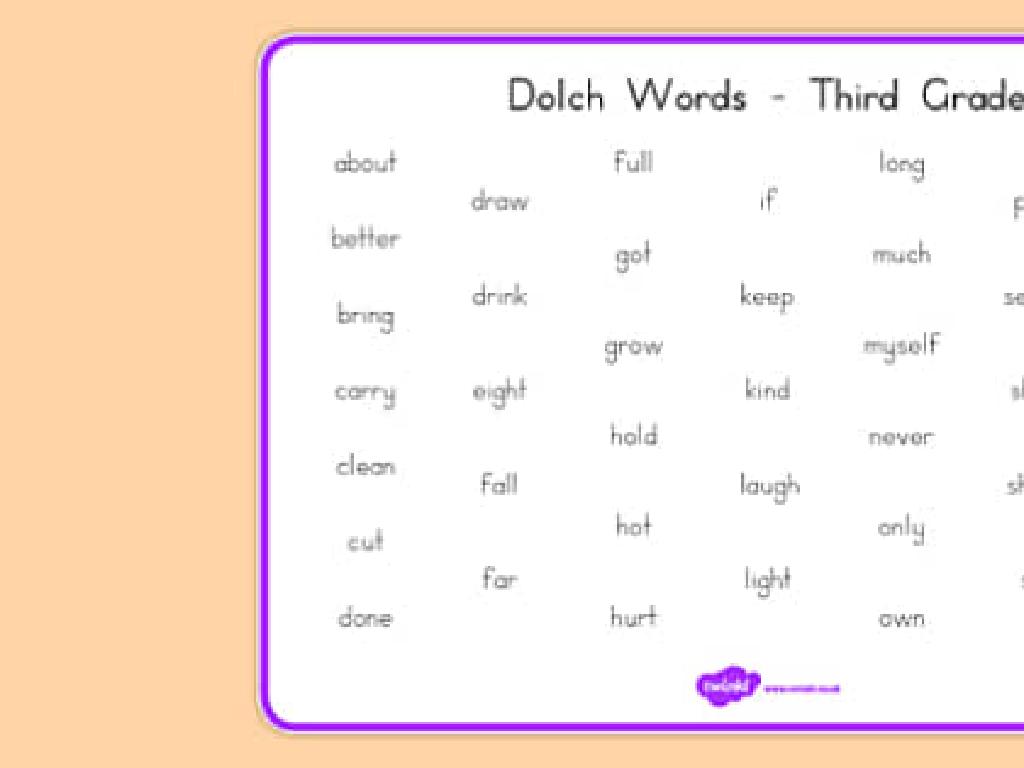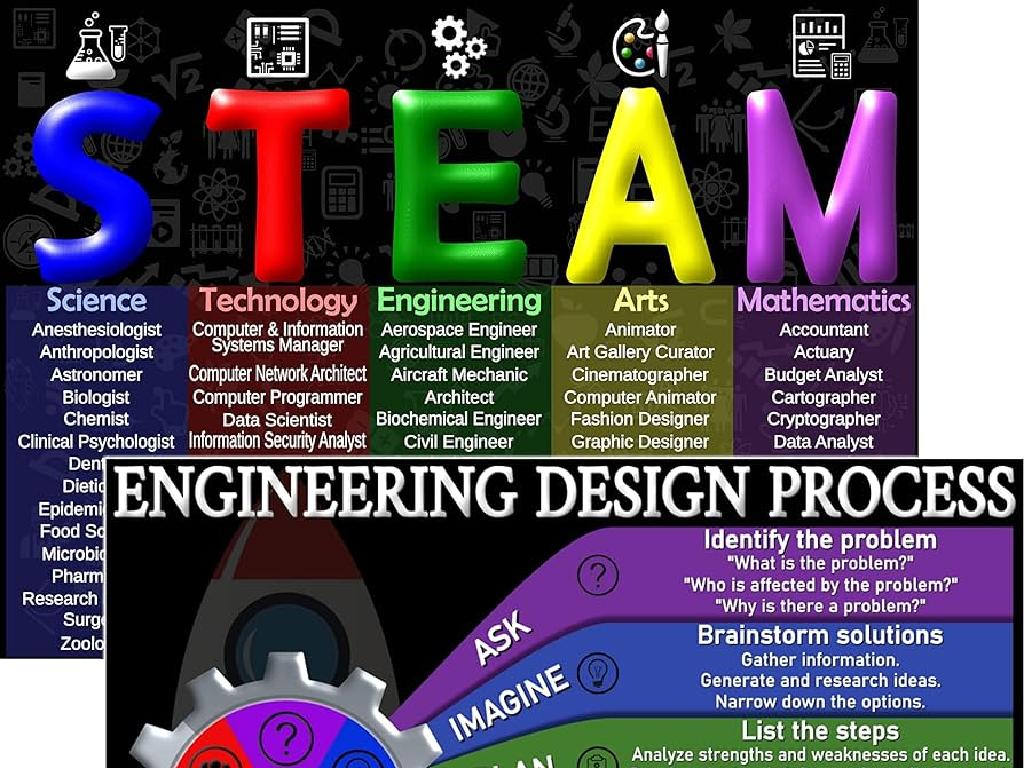Classify Matter As Solid, Liquid, Or Gas
Subject: Science
Grade: Third grade
Topic: States Of Matter
Please LOG IN to download the presentation. Access is available to registered users only.
View More Content
Welcome to States of Matter!
– Matter is everything around us
– Matter can be solid, liquid, or gas
– Examples of each state of matter
– Solids: Rock; Liquids: Water; Gases: Air
– Class activity: Identify matter states
– Find items in the classroom and categorize them
|
This slide introduces the concept of matter and its three states: solid, liquid, and gas. Begin by explaining that matter makes up everything in the world. Then, describe each state of matter, providing characteristics such as shape and volume. Ask the students to give examples of each state to ensure they understand the concept. For the class activity, have students look around the classroom or their homes to find examples of solids, liquids, and gases and categorize them. This will help reinforce their understanding through practical application. Possible activities include sorting objects, a scavenger hunt for different states of matter, or drawing examples of each state.
Exploring States of Matter
– Matter is everything around us
– Matter has mass and occupies space
– Matter comes in different forms
– Like water can be ice, liquid, or steam
– Solids, liquids, and gases
– Solids hold shape, liquids flow, gases fill space
|
This slide introduces the concept of matter and its different states to third-grade students. Begin by explaining that everything they can touch and see is made up of matter. Emphasize that matter is defined by having mass and taking up space. Use relatable examples like toys (solid), water (liquid), and air (gas) to illustrate the different forms matter can take. Explain that matter can change states under different conditions, such as water turning into ice or steam. Encourage students to think of other examples of solids, liquids, and gases in their environment. This foundational understanding will set the stage for more in-depth exploration of the properties of each state of matter in subsequent lessons.
Exploring Solids in States of Matter
– Solids have a fixed shape and volume
– Particles are packed tight in solids
– They stay still and vibrate in place
– Solids don’t flow like liquids or gases
– Common examples of solids
– Rocks, ice, and desks are all solids
|
This slide introduces the concept of solids within the topic of states of matter. Emphasize that solids have a specific shape and volume that do not change. Explain that the particles in a solid are very close to each other and do not move around freely; they only vibrate in place. This is why a rock or a piece of ice maintains its shape and does not flow like water or spread out like gas. Use familiar objects from the classroom or home as examples to help students relate to the concept. Encourage students to think of other solids they encounter daily and discuss why these items are classified as solids.
Exploring Liquids: A State of Matter
– Liquids have a set volume
– Like a cup of water always seems full
– They take the shape of containers
– Pour water into different containers to see!
– Particles move around freely
– Think of swimmers moving around in a pool
– Common liquids: water, milk, juice
– These are liquids we drink every day
|
This slide introduces students to the properties of liquids within the context of the states of matter. Emphasize that while liquids have a definite volume, meaning they can’t be compressed into a smaller size, they don’t have a fixed shape and will spread out to fit the shape of whatever container they’re in. Demonstrate this concept by showing how water looks the same in different shaped containers. Discuss how the particles in a liquid are not as tightly packed as in a solid, allowing them to move around each other, which is why liquids can flow. Use familiar examples like water, milk, and juice to make the concept relatable. Encourage students to think of other examples of liquids they encounter in their daily lives.
Exploring Gases: A State of Matter
– Gases lack definite shape
– Gases lack definite volume
– Particles move freely in gases
– Particles in gases are far apart and move around quickly, unlike solids or liquids.
– Common examples of gases
– Air we breathe, helium in balloons, and steam from boiling water.
|
This slide introduces the concept of gases as one of the states of matter. Emphasize that unlike solids and liquids, gases do not have a fixed shape or volume. This means they can spread out to fill the space of their container. The particles in a gas are much farther apart compared to solids and liquids, allowing them to move freely and quickly. Use everyday examples like the air around us, helium in balloons, and steam from hot water to illustrate the concept of gases. Encourage students to think of more examples and discuss how gases are different from solids and liquids in terms of particle movement and behavior.
Changing States of Matter
– Matter changes with heat or cold
– Solid to liquid is melting
– Like ice melting into water
– Liquid to gas is vaporization
– Like water boiling into steam
– Reversing: freezing and condensation
– Freezing: water to ice, Condensation: steam to water
|
This slide is aimed at helping third-grade students understand how matter changes states when it is heated or cooled. Emphasize that these changes are part of a cycle and reversible. Melting occurs when a solid (like ice) becomes a liquid (water) because of added heat. Vaporization happens when a liquid (water) turns into a gas (steam) when heated. Conversely, freezing happens when a liquid (water) turns back into a solid (ice) when it loses heat. Condensation is when a gas (steam) cools down and changes back into a liquid (water). Use everyday examples like ice, water, and steam to illustrate these concepts. Encourage students to think of other examples of these changes in states of matter that they’ve observed in their daily lives.
Let’s Experiment with States of Matter!
– Observe ice melting into water
– Watch water freeze back to ice
– See water evaporate into vapor
– Discuss changes in states of matter
– How does matter change from one state to another?
|
This slide introduces a hands-on class activity designed to help third-grade students observe the changes in states of matter firsthand. The activity involves observing ice as it melts into water, demonstrating the change from solid to liquid. Next, students will watch water freeze back into ice, showing the transition from liquid to solid. Finally, they will see water evaporate when heated, turning from liquid to gas. The discussion should focus on what causes these changes, such as temperature changes, and reinforce the concept that the type of matter doesn’t change, just its state. Possible activities include: 1) Placing ice cubes in a warm place and watching them melt, 2) Filling an ice tray with water and putting it in the freezer, 3) Boiling water to observe evaporation. Encourage students to touch, see, and talk about what they observe during these experiments.
Class Activity: Matter Scavenger Hunt
– Find classroom matter examples
– Look for solids, liquids, and gases
– Work in groups to classify items
– Is it a solid, liquid, or gas? Discuss with your group
– Share findings with the class
– Each group will present their classified items
|
This interactive activity is designed to help students apply their knowledge of the states of matter by identifying and classifying objects found in their immediate environment. Divide the class into small groups and provide each with a list of items to find within the classroom that represent solids, liquids, and gases. Encourage them to discuss within their groups why each item belongs to a particular state of matter. After the scavenger hunt, each group will present their findings, explaining their reasoning. This will reinforce their understanding of the characteristics of solids, liquids, and gases. Possible items on the scavenger hunt list could include a pencil (solid), water in a bottle (liquid), and air in a balloon (gas).






